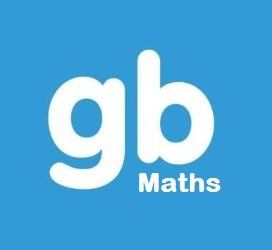Online Maths Tuition That Works for You
Achieve better results with flexible, personalised online maths tuition — tailored to your goals, schedule, and learning style.
Whether you're preparing for exams or need regular support with your maths studies, online lessons make it easy to learn from the comfort of your own home — no travel, no stress. You can even join lessons while away from home or abroad.
Why Choose Online Tuition?
✅ Convenient & Flexible
Fit lessons around your school schedule, extracurriculars, or holidays — no travelling needed.
✅ Comfort & Safety
Learn in a familiar and secure environment — your own home. Parents can also stay nearby during sessions.
✅ Engaging & Effective
Online tools like digital whiteboards, interactive resources, and shared folders make learning fun and effective.
✅ Affordable
Lower tuition fees and no travel costs make online learning a smart and budget-friendly choice.
✅ Safe & Professional
All sessions can be recorded on Skype or Zoom. I offer a fully secure setup, and I’m a vetted professional tutor.
✅ Tech-Savvy Learning
Boost your child’s digital skills by working with online platforms like Skype, Zoom, Google Drive, and more.
✅ Organised Learning Resources
Every student receives a dedicated Google Drive folder with:
Homework and exam papers
Revision sheets and formula booklets
Progress tracking and lesson notes
All you need is a desktop, laptop, Chromebook, or tablet with Skype, Zoom, or MS Teams — I’ll take care of the rest. Don’t have a Skype account? No problem — I can provide one for you.
Let me help you reach your full potential in mathematics — no matter where you are.
Get in touch to book your first lesson!
References:
Facebook reviews
What Does a Typical Lesson Involve?
Every 1-hour online maths session follows a clear, structured plan designed to maximise engagement and understanding. Lessons are interactive, personalised, and built to help each student master key mathematical concepts and develop problem-solving confidence.
Lesson Structure
Each session typically includes:
Review of previous homework
On-screen teaching:
context, theory, worked examples, quick test questions
Student practice:
working through problems on paper
Revision:
for an upcoming school test or current topic
Homework assigned:
using trusted online resources and past exam papers
Carefully Designed Lesson Plans
With my academic experience in curriculum design, I’ve developed 20 structured lesson plans, covering the entire secondary maths syllabus.
Each lesson follows a consistent format and is delivered interactively using Zoom or Microsoft Teams with smart screen sharing and stylus annotations.
What Each Lesson Covers
1. Context and Conceptual Understanding
- A brief recap of last week’s homework
- Where the topic fits in the bigger picture of the syllabus
- What came before, and what’s coming next
- Definitions, key formulas, methodologies, golden rules
- A typical exam-style question and common student misconceptions
- Expert hints and exam-focused tips
2. Guided Solutions
Using interactive screen-sharing tools, I guide students through at least 4 worked examples. I explain methods step by step, focusing on both understanding and efficient problem-solving.
Students are then asked to:
Explain the key concepts back in their own words
Solve simple questions mentally
Attempt a few written questions independently
Homework and Practice
Homework is set weekly using a mix of:
Online questions and platforms
My own carefully selected resources
SQA-style written past paper questions
Homework is reviewed and discussed at the start of the next lesson to reinforce learning.
Exam Technique & Problem Solving
In addition to topic-based lessons, I offer focused sessions on Exam Management & Strategy, which include:
Smart revision planning
What to do in the final days before the exam
Time-saving tips and tactics during the exam
Strategic advice: e.g., knowing when to factorise vs. use the quadratic formula
I also draw on examiner reports and marking schemes to share what "examiners do and don’t want to see" — insights students often miss at school.
Have questions or want to book tuition?
Message me on social media or use the form below 👇
